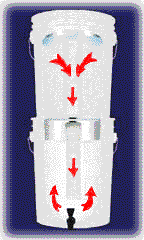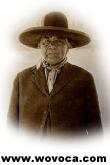|
||||||||||||||||||
Press CTRL+D to bookmark this page! |
||||||||||||||||||
 |
||||||||||||||||||
| Click here for
EarthMotherCrying Wallpaper |
||||||||||||||||||
AFTERLIFE MYTHS OF THE WESTERN HEMISPHEREpart one |
||||||||||||||||||
|
||||||||||||||||||
|
||||||||||||||||||
|
|
||||||||||||||||||
|
||||||||||||||||||
|
||||||||||||||||||
|
||||||||||||||||||
|
||||||||||||||||||
When People die, they must go over a hill. There is a dividing line between the world we live in and the world of those who have gone before us. That line is the crest of a hill. In the old days, there was just the line of rocks on the crest of the hill. Nowadays, when all the country is fenced, there is a line of barbed wire to mark the boundary. When someone is very sick, he may start climbing the hill. It is hard work going up, especially if his loved ones are here and calling him back. But if he is suffering a great deal, he will go on, toiling to reach the top despite those who are calling him back. If he reaches the top of the hill, he can look across to the other side. The downhill slope is easy, and the grass is thick. At the bottom is a river, and across the river is a big Indian camp. The children are playing. As soon as they see the sicker person, they call for him to join them. But if the people in the land of the living love him enough to hold him, he will stay with them. He will know all the people in the camp and will love them all, but the living can hold him if they beg hard enough. This can happen more than once in a life. There is no difference in the afterlife of the good and the bad; all share the same world after death. It is the Arapaho way not to judge people.
From:
American
Indian Mythology by Alice Marriott and Carol Rachlin
InuitThe Inuit live upon the vast expanse of the windswept, treeless tundra of Canada. Especially during the long months of the Arctic winter, they lift their eyes to the star-studded sky dome overhead. The heavens high above, they say, are the sacred abode of a mighty spirit. The anatkut say that it is a woman. To this place in the skies and to this potent feminine spirit, the souls of all who die are conveyed. At death, the soul is not extinguished. It lives on to surface again in another organism, investing it with a sacred spark of consciousness. One story from this northern region describes the meandering path that one wandering human soul took after its mother treated it disrespectfully at birth. First it was reincarnated in a dog, then in a seal, a wolf, a caribou, a walrus, and finally, perhaps out of nostalgia, once again in a seal. But this time the seal decided to sacrifice itself willingly to a hunter, whose wife was barren. As she flayed the carcass, its wandering soul passed into her body, and she became pregnant. She gave birth to a healthy boy, who became a hunter and was very skilled, partly due to the wisdom the soul had accumulated during the course of its interspecies journey. Following death, souls lodge temporarily in the heavenly female spirit’s lofty dwelling place. Here they undergo a profound transformation: the souls of the dead are reborn, and are subsequently brought down to earth again by the moon. But the skyward passage of souls is not yet complete. Once they have been thus revitalized by the woman up there and returned to the familiar tundra lands whence they came, they are destined to follow countless possible paths. Some become human beings once more, others become animals, all manner of beasts. And so life goes on without end.
From:
Wisdom
of the Elders by David Suzuki and Peter Knudtson
Kalapalo (Indians of Brazil)The Kalapalo believe a person’s shadow travels upon death to a village located in the sky, far to the east near the point where the sun rises. After the body has been buried, that night the shadow visits the grieving family for the last time in their house and consumes food that the family has prepared. The next day he leaves the village and travels to the east until he reaches the sky. Still traveling east, the shadow approaches the entrance path to the village of the dead. here he first encounters a side path leading to a smaller settlement. The shadows who live in this village always try to persuade the newly deceased to join them, and if the traveling shadow turns to look at them as they call to him, he is compelled to live in their village without ever seeing the main one. If he is successful in avoiding this detour, the shadow then comes to a stream over which are placed logs covered with a thick layer of moss. The shadow has difficulty walking over this slippery bridge and must be met by a deceased relative who assists in the crossing. Finally, the shadow is conducted to the plaza of the village of the dead, where he is seated on a stool and presented to Sakufenu, out of whose body all people originally came. Sakufenu nurses the deceased; then a seclusion chamber is built, and the shadow enters for as long as it takes to become strong again. Finally, when the soul is strong once more, he or she joins the rest of the community in continual ceremonial dancing and singing. The people of the village of the dead are able to spend all their time singing and dancing in ceremonies because they do not have to cultivate crops; no one ever goes hungry because of a magical silo in the center of the village. [Excerpted from Kalapalo Indians of Central Brazil by Ellen B. Basso.]
SecularThere is no scientific proof of an afterlife, but studies (such as those of Doctors Raymond Moody, Karlis Osis, Elisabeth Kubler-Ross, and Kenneth Ring) describe fascinating experiences. Thousands of interviews with the dying, the clinically dead, and their physicians reveal a consistent pattern in the accounts of near-death experience. Not every nearly dead person remembers such an experience; one study indicates that about half do. Not all the elements of the core experience occur in each instance, nor are they in the same sequence. But in each case the same journey is described, with different people encountering different segments of the whole. The vast majority of people travel along the initial stages of the journey; only about one fourth go most or all of the way. Neither religiousness nor prior acquaintance with near-death research affects the likelihood of a person’s having such experiences. However, brain impairment, drugs, and alcohol are inhibiting factors. What follows is a generalized description of the round trip, based on the studies of Moody and Ring. The person near death is filled with a sense of peace and well-being, which soon turns into happiness or overwhelming joy. There may be a windlike sound or ringing in the ears, but usually all is quiet and there is no pain. She may be aware that she is dying or already dead. Next she finds herself at a distance from her physical body, looking at it from above or from a corner of the room. All this seems real, not dreamlike; hearing and vision are sharp, the mind is alert, thoughts are logical and coherent. She can hear the conversations and watch the actions of doctors and nurses, friends and relatives as they grieve or try to resuscitate her. She notices that she still has a body but of a different kind from the one she has left. It is weightless and without sensation. She soon becomes aware of another reality into which she is gradually drawn. She enters a dark void, beyond time and space. Sometimes the darkness is perceived as a tunnel, narrow at the entry and getting wider as the physical world recedes. She may experience feelings of loneliness but not fear. Serenity and peace continue to fill her consciousness. She floats through the still darkness toward a bright light. [Note: Some recent reports have noted that some people experience more darkness and light, and that they return with the sense that they have witnessed the Christian version of Hell.] The light becomes identified with an unseen presence, a godlike being, who emphasizes the importance of acquiring knowledge and loving one another. The presence speaks to the person or simply projects thoughts directly into her mind. She knows she has reached a boundary or threshold. The presence communicates to the person that she must choose whether to proceed toward the unknown destination or return to physical life. She is shown, as if on a movie screen, a rapid replay of the events of her past. She may be given some information about her future life in case she decides to return. Her mind rationally considers the alternatives, then decides to return because of obligations to the living or unfinished earthly business. Sometimes the person may catch a glimpse of the ineffably beautiful world of light, where there are unforgettable colors, crystalline blue lakes, golden grass, fields and meadows with music and signing birds. In this world there are structures which resemble nothing on earth. Here she is temporarily reunited with deceased friends and relatives, who greet her and urge her to return to life. The person feels great joy in the reunion and is reluctant to leave. Once the decision to leave is made, the experience terminates abruptly. Now the person is wrenched or jolted back to life, reentering the physical body as if through the head. Or she may be unaware of how she returned. Afterwards she can find no words adequate to express her experience and is reticent to discuss it for fear of being misunderstood or ridiculed. However, she is convinced that life after death is not merely probably, but a veritable certainty.

More Reading
The
Wisdom of the Serpent
Amerindian
Rebirth: Reincarnation
Beyond
Death: The Gates of Consciousness
Banshee:
The Irish Death Messenger
Edgar
Cayce on Reincarnation
After
Death: Mapping the Journey
Life
After Life
Life's
Daughter/Death's Bride
The
Light Beyond
|
||||||||||||||||||
|
||||||||||||||||||
Shapeshift to WOVOCA! to view this site's main page |
||||||||||||||||||
|
||||||||||||||||||
|
||||||||||||||||||
|
||||||||||||||||||
|
||||||||||||||||||
|
||||||||||||||||||









![[Image]](pict41.jpg)
![[Image]](pict43.jpg)